10 items found
Page 1 of 1
-

Pair of French Louis XV style ormolu chenets,
£3,800Pair of French Louis XV style ormolu chenets,
each with sphinx on a c-scroll rococo base, one holding a cat, the other a monkey.£3,800 -
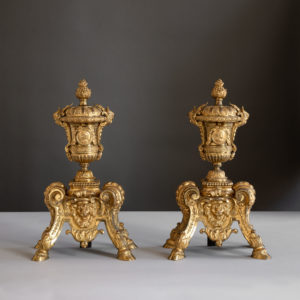
Pair of French nineteenth century gilt-bronze chenets,
£2,400Pair of French nineteenth century gilt-bronze chenets,
the flaming urn finials with inset medallions depicting Hadrian and Trajan,£2,400 -

Georgian style steel and iron andirons
£1,400Georgian style steel and iron andirons
with urn finials and knopped stems, twentieth century.£1,400 -
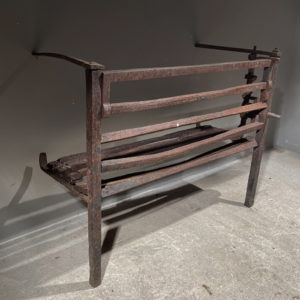
An old English wrought iron kitchen inglenook fire-basket,
£1,200An old English wrought iron kitchen inglenook fire-basket,
the railed basket-front with an articulated drop-front trivet bar, secured with a retaining hook, the right cheek incorporating a cogged spit-turning mechanism (operational),£1,200 -
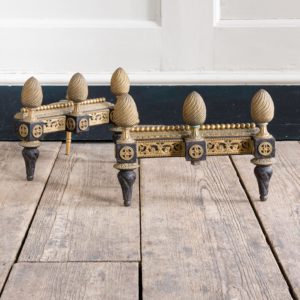
Louis XVI style gilt bronze and iron chenet,
£950 -
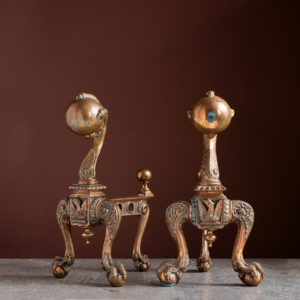
Pair of nineteenth century French bronze andirons
£850Pair of nineteenth century French bronze andirons
finely modelled, with eagle mount to the front, raised on claw and ball feet.£850 -
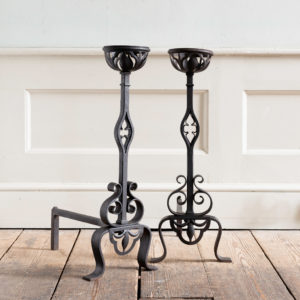
Pair of wrought iron andirons, in the Gothic taste
£800Pair of wrought iron andirons, in the Gothic taste
The pierced fret work mead cup holders, above a square bar support section centred by quatrefoil gothic design leading to s-c scrolls supported on scroll feet with further pierced fret work decorated apron, L shaped support behind.£800 -
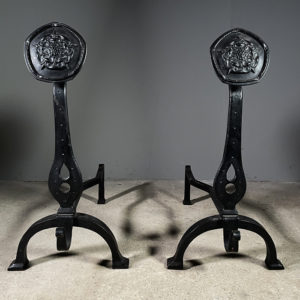
A pair of English cast and wrought iron andirons
£610A pair of English cast and wrought iron andirons
the tall dogs topped with Tudor Rose disc finials atop forged standards on arched supports and square section billet-bars,£610 -
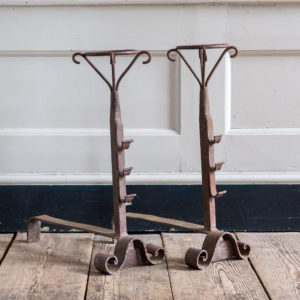
Pair of mid-twentieth century wrought iron andirons,
£285 the pairPair of mid-twentieth century wrought iron andirons,
with cressets and spit-hooks, on scroll supports.£285 the pair -
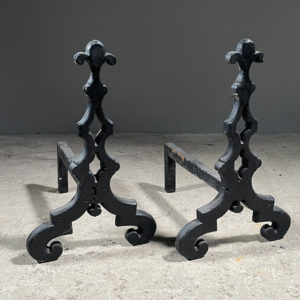
A pair of English cast iron fire dogs
£120A pair of English cast iron fire dogs
the tall pierced standards raised on spreading supports and square section billet-bars,£120
Featured Items
-
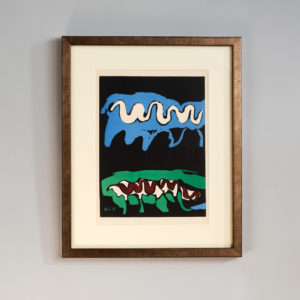
The Four Elements, Earth by Francisco Bores, Verve Vol. 1 / No. 1.
£600The Four Elements, Earth by Francisco Bores, Verve Vol. 1 / No. 1.
The Verve Review was a purposefully luxurious. It ran from 1937 to 1960, but with only 38 editions available, due to the high degree of design and editorial work dedicated to each issue. Each edition contained unique lithographic prints, commissioned by the editor, and each cover a double-page lithograph elaborated by one of the artists contained within. It was the brainchild of its editor Stratis Eleftheriades, a Greek National who moved to Paris in the early thirties to take part in the growing Modernist movement, writing under the name of Teriade.£600 -
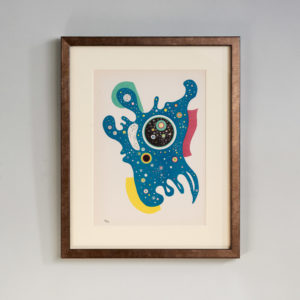
Stars by Wassily Kandinsky, Verve Vol. 1 / No. 2.
£800Stars by Wassily Kandinsky, Verve Vol. 1 / No. 2.
The Verve Review was a purposefully luxurious. It ran from 1937 to 1960, but with only 38 editions available, due to the high degree of design and editorial work dedicated to each issue. Each edition contained unique lithographic prints, commissioned by the editor, and each cover a double-page lithograph elaborated by one of the artists contained within. It was the brainchild of its editor Stratis Eleftheriades, a Greek National who moved to Paris in the early thirties to take part in the growing Modernist movement, writing under the name of Teriade.£800 -
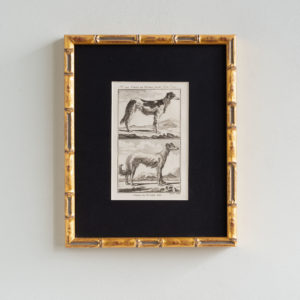
18th Century French Engravings of Dogs
£175 each18th Century French Engravings of Dogs
Published for, Histoire naturelle, générale et particulière (1749–1804), which was the first modern attempt to systematically present all existing knowledge in the fields of natural history, geology, and anthropology.£175 each -
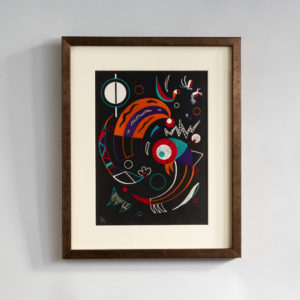
Comets by Wassily Kandinsky, Verve Vol. 1 / No. 2.
£800Comets by Wassily Kandinsky, Verve Vol. 1 / No. 2.
The Verve Review was a purposefully luxurious. It ran from 1937 to 1960, but with only 38 editions available, due to the high degree of design and editorial work dedicated to each issue. Each edition contained unique lithographic prints, commissioned by the editor, and each cover a double-page lithograph elaborated by one of the artists contained within. It was the brainchild of its editor Stratis Eleftheriades, a Greek National who moved to Paris in the early thirties to take part in the growing Modernist movement, writing under the name of Teriade.£800
